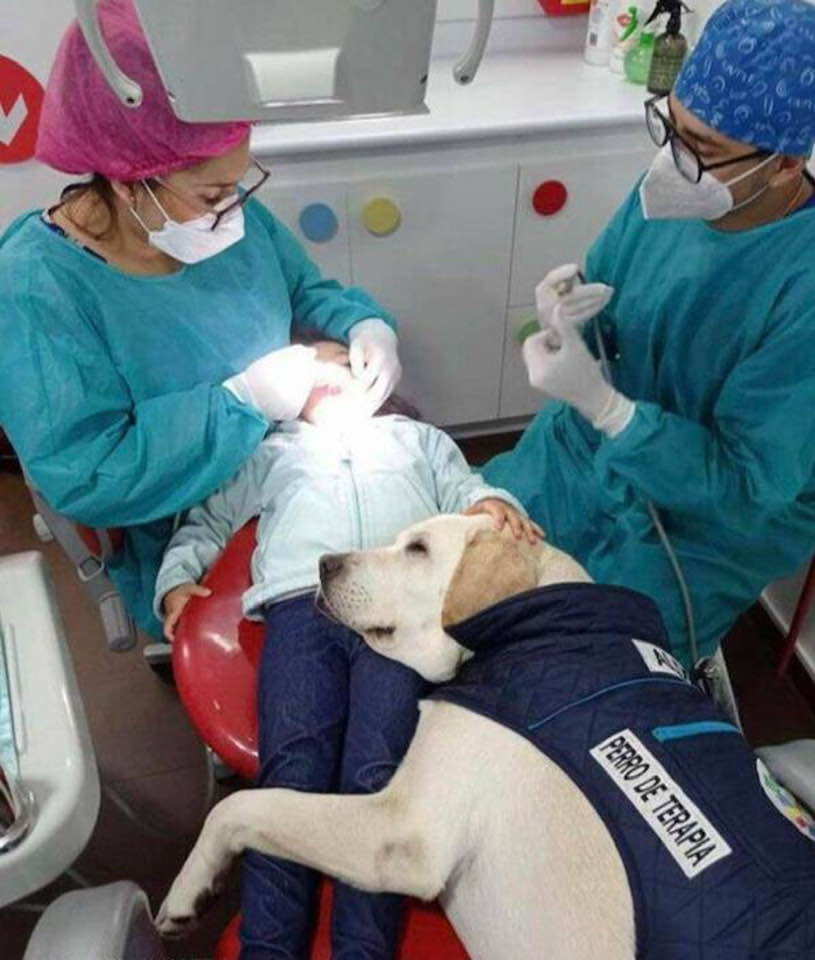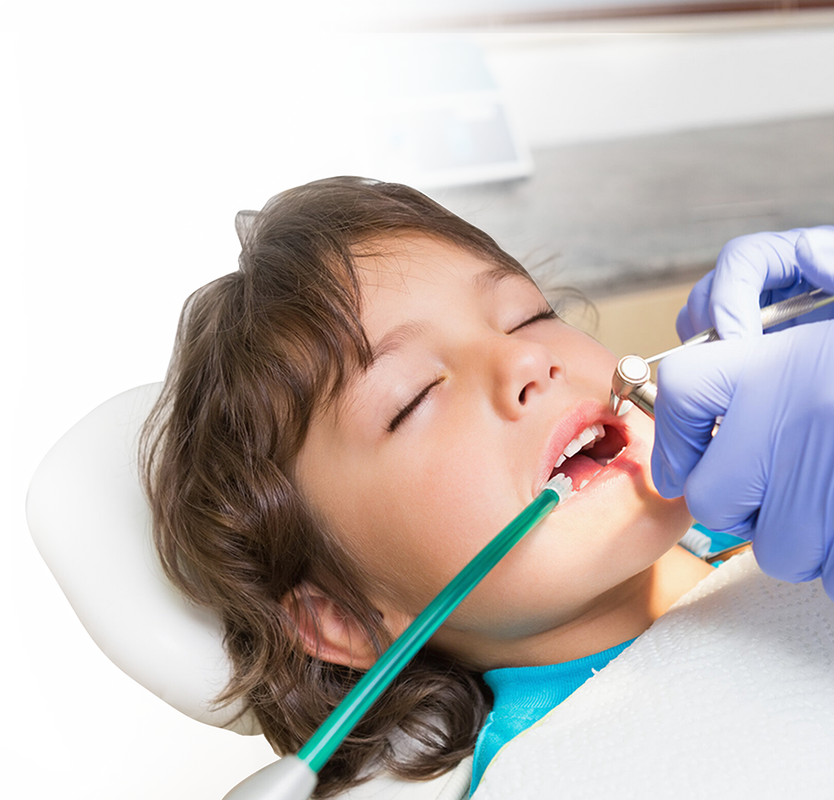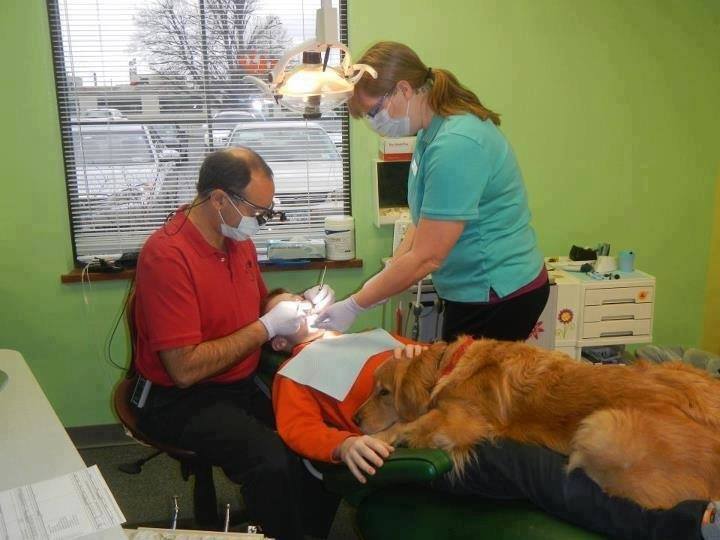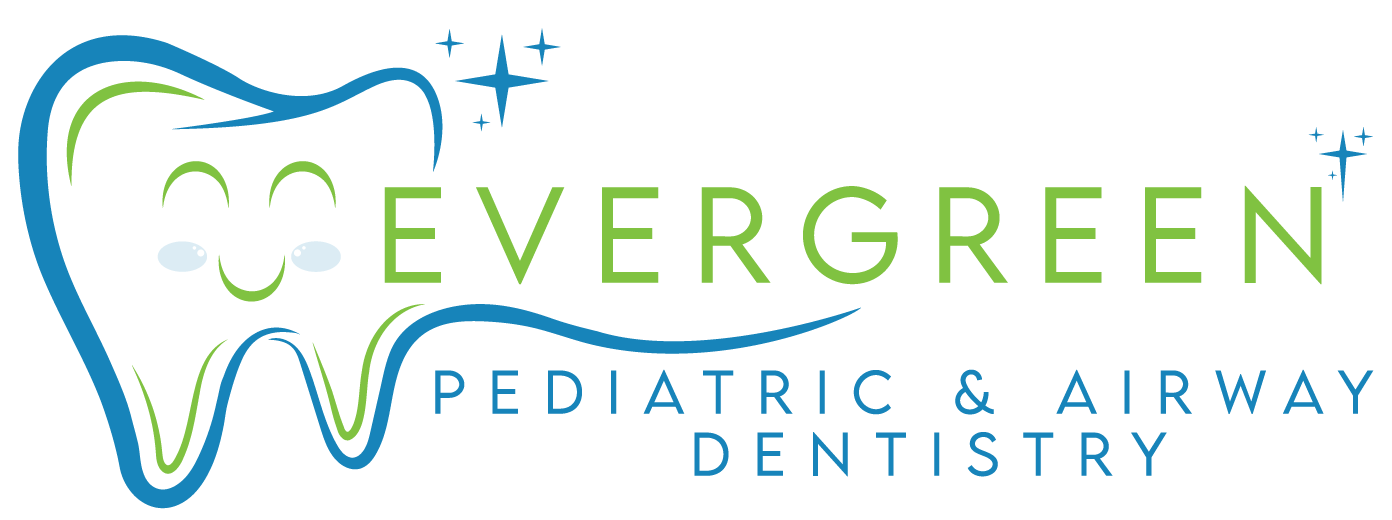From Fear to Fun: Transforming Dental Visits with Sleep Dentistry
For many children (and, let’s admit it, quite a few adults), the mere mention of a dental visit can evoke feelings ranging from mild apprehension to outright terror. The sights, sounds, and sometimes discomfort associated with dental care can make it a daunting experience for the young ones. However, what if we told you that a visit to the dentist could be as easy and enjoyable as slipping into a peaceful nap? Enter the world of sleep dentistry—a revolutionary approach that is transforming dental visits from fear-inducing to fun for kids. In this blog, we’ll explore how sleep dentistry works, its benefits, and why it might be the perfect solution for making your child’s next dental visit a stress-free, positive experience.
Understanding the Fear of Dental Visits
Fear of dental visits, clinically known as dental anxiety or dental phobia, impacts individuals of all ages, but it tends to be more pronounced among children. This fear often stems from a mixture of the unknown, negative past experiences, or stories heard from others. The unfamiliar environment, the sound of the dental equipment, and the fear of experiencing pain contribute to the anxiety that surrounds dental visits. It’s a cycle that can lead to avoidance, which, in turn, exacerbates dental problems and the need for more invasive treatments, further fueling the fear. Recognizing this, dentists are increasingly adopting empathetic approaches, such as sleep dentistry, to alleviate these fears and transform dental care into a positive experience.

Sleep Dentistry
What is Sleep Dentistry?
Sleep dentistry, also known as sedation dentistry, involves the use of medication to help patients relax or even sleep through their dental procedures. This method can range from mild sedation, where the patient is awake but relaxed, to general anesthesia, where the patient is completely unconscious. The level of sedation is tailored to the individual’s needs and the nature of the procedure. It’s an effective solution for overcoming dental anxiety, making it possible for patients, especially children, to receive the dental care they need without fear or discomfort. By offering a dream-like state, sleep dentistry not only minimizes stress for the patient but can also enable more complex procedures to be completed in fewer visits, ensuring a more efficient and pleasant dental care experience.
Benefits of Sleep Dentistry for Children
Sleep dentistry stands as a beacon of hope for children who dread dental visits, transforming potentially traumatic experiences into serene, unremarkable memories. The most immediate benefit is the reduction of fear and anxiety, allowing children to face dental treatments without the pre-visit nightmares or resistance. This calmer approach not only makes the visit more pleasant for the child but significantly eases the stress on parents and caregivers as well.
Beyond emotional well-being, sleep dentistry enhances the safety and efficacy of dental procedures. Children, especially those who are particularly anxious or have special needs, may find it difficult to remain still during treatments, posing challenges to the precision required in dental work. Sedation mitigates these risks, enabling dentists to work with greater accuracy and efficiency. Furthermore, by consolidating multiple procedures into fewer sessions, sleep dentistry reduces the overall exposure to the clinical environment, an aspect particularly beneficial for young patients.
Lastly, positive experiences with sleep dentistry at an early age can pave the way for lifelong dental health. Children who have undergone stress-free visits are more likely to develop a neutral or even positive view of dental care, encouraging regular check-ups and better oral hygiene practices. This foundational attitude towards dental health can lead to fewer dental issues in adulthood, underscoring the long-term benefits of introducing children to sleep dentistry.
Types of Procedures Possible with Sleep Dentistry
Sleep dentistry is remarkably versatile, accommodating a wide range of dental procedures, from routine care to more complex surgeries. For children and adults alike, even basic treatments such as teeth cleaning, cavity filling, and dental X-rays, which might normally cause discomfort or anxiety, can be performed under sedation, ensuring a stress-free experience. More advanced procedures, including root canals, tooth extractions, and the placement of crowns or bridges, also benefit from sleep dentistry, as it allows for these more invasive treatments to be conducted without pain or fear.
For children with extensive dental needs or who require orthodontic adjustments, such as the fitting of braces or other corrective devices, sleep dentistry offers a calm and cooperative environment for both the patient and the dental professional. It also proves invaluable for special needs children who might find the dental office environment particularly challenging. By enabling a range of procedures to be done with the patient comfortably sedated, sleep dentistry not only improves the quality of dental care but also the overall health and well-being of the patient, setting a foundation for positive dental experiences throughout their lives.
Who is an Ideal Candidate for Sleep Dentistry?
Ideal candidates for sleep dentistry include individuals who experience significant dental anxiety or phobia, making traditional dental procedures highly stressful or intolerable. This encompasses not only children but adults who have either had traumatic dental experiences in the past or possess an inherently low pain threshold. Patients with special needs, who may find the sensory stimuli of a dental office overwhelming or have difficulty staying still for extended periods, also benefit greatly from sleep dentistry. Additionally, individuals requiring multiple or complex dental treatments may choose sleep dentistry to consolidate these procedures into fewer, more manageable sessions. By assessing a patient’s medical history, level of anxiety, and the specifics of the dental treatment needed, dentists can determine the appropriate level of sedation, ensuring a safe, comfortable, and effective dental care experience.

Sleep Dentistry
Safety Measures and Protocols in Sleep Dentistry
Ensuring safety is paramount when it comes to sleep dentistry, especially for children. Dentists and dental anesthesiologists adhere to strict protocols and guidelines to ensure that the sedation process is as safe and effective as possible. Before proceeding with any form of sedation, a thorough review of the patient’s medical history is conducted to identify any potential risks or contraindications. Additionally, patients undergo a pre-sedation assessment to determine the most appropriate level of sedation.
During the procedure, the patient’s vital signs are continuously monitored by specialized equipment and personnel trained in anesthesia. This vigilant monitoring helps to ensure the patient remains in a safe and stable condition throughout the dental treatment. Furthermore, dentists and their teams undergo regular training in emergency response to handle any unexpected situations promptly and efficiently.
Post-procedure care also plays a critical role in the safety of sleep dentistry. Patients are observed until they are fully alert and, in the case of children, parents or guardians are provided with specific after-care instructions to manage the recovery process at home. These comprehensive safety measures are integral to the successful implementation of sleep dentistry, providing both patients and caregivers with peace of mind while undergoing dental treatments.
Life After Sleep Dentistry: Recovery and Results
The aftermath of undergoing dental procedures with sleep dentistry is typically marked by a rapid and comfortable recovery phase, with many patients expressing surprise at the ease of the experience. Immediately following a procedure, as the sedation wears off, patients might feel a bit groggy or disoriented, but these sensations usually dissipate within a few hours. It’s crucial for adults to have someone available to drive them home and, in the case of children, to be under close watch by a caregiver as they regain full alertness.
The effectiveness of sleep dentistry often reveals itself in the days post-procedure, with patients experiencing minimal discomfort and pain. This is in stark contrast to the recovery from more traditional dental treatments, which can be marked by significant pain and discomfort. Furthermore, due to the precision and efficacy enabled by sleep dentistry, the results of dental procedures are frequently of higher quality and lasting benefit. Patients find themselves not only satisfied with the outcomes but also more inclined to maintain regular dental visits, thus improving their long-term oral health.
Another significant aspect of recovery is the alleviation of dental anxiety in future appointments. Having undergone dental treatment in such a positive and stress-free manner contributes to the dismantling of any previously held fears or anxieties about dental care. This psychological benefit cannot be overstated, as it directly impacts a patient’s willingness to seek dental treatment proactively, promoting a cycle of health that can impact overall wellbeing.
Preparing Your Child for Sleep Dentistry
Preparing your child for a sleep dentistry procedure can significantly reduce any anxiety they may feel and contribute to a smoother experience for both child and parent. Here are practical tips on how to prepare young patients for their visit:
- Open Conversation: Start with an open and honest discussion about the upcoming visit, in a manner tailored to their age and comprehension level. Use positive language to describe the process; for example, emphasizing that they will be “taking a nap” during which the dentist will take care of their teeth to make them strong and healthy.
- Role-Playing: Children often find comfort in familiarity. Playing dentist at home can demystify the experience. Take turns being the dentist and the patient, using simple tools like a toothbrush to simulate dental work.
- Visiting the Dentist before the Procedure: If possible, arrange a non-treatment visit to the dental office. Meeting the dentist and staff and seeing the environment can help alleviate fears of the unknown.
- Comfort Items: Allow your child to choose a favorite toy or blanket to bring to the appointment, which can provide emotional comfort during the visit.
- Clear Instructions: Follow any pre-visit instructions from your dental team, such as fasting rules if general anesthesia is involved. Making sure these guidelines are followed is essential for the safety and efficacy of the sedation process.
What Parents Can Expect During the Procedure
During the procedure, parents can expect the dental team to ensure the utmost care and safety for their child. Here’s an outline of the typical process:
- Pre-Procedure Assessment: Upon arrival, the dental team will review your child’s medical history and conduct a final check to ensure they are fit for sedation.
- Sedation Administration: The type of sedation used will depend on the procedure and your child’s needs. The team will carefully administer the sedation, ensuring your child is comfortable and relaxed.
- Continuous Monitoring: Throughout the procedure, your child’s vital signs will be closely monitored by the dental team, who are trained to manage sedation and respond to any changes in your child’s condition.
- Recovery: After the procedure, your child will be moved to a recovery area where they will gradually wake from the sedation. The recovery process varies depending on the type of sedation used; some children may become alert quickly, while others may take longer.
- Post-Procedure Care: Before you leave, you’ll be given detailed after-care instructions. It’s crucial to follow these closely to ensure a smooth recovery. Typical instructions may include dietary restrictions, pain management, and signs of potential complications to watch for.
Why Choose Sleep Dentistry for Your Child
Choosing sleep dentistry for your child comes with numerous benefits, making it a preferred choice for many parents concerned about their child’s dental health and emotional well-being during dental procedures. Firstly, sleep dentistry can significantly alleviate the fear and anxiety often associated with dental visits, ensuring that your child has a positive and stress-free experience. This is particularly important for children who may have had negative experiences in the past or those who are naturally anxious about medical treatments.

Sleep Dentistry
Additionally, sleep dentistry allows for more complex dental procedures to be completed with minimal discomfort to the child. Instead of multiple visits, which can be daunting, necessary treatments can often be consolidated into fewer appointments. This not only saves time but also reduces the child’s exposure to the clinical environment, making dental care more efficient and less intimidating.
Furthermore, the introduction of sleep dentistry at an early age can foster a healthier perspective towards dental care, paving the way for better oral hygiene habits as the child grows. By eliminating negative associations with dental visits, children are more likely to maintain regular dental check-ups and care for their dental health into adulthood. This proactive approach to dental health can help prevent more serious issues later in life.
How Sleep Dentistry is Changing Dental Care
Sleep dentistry is revolutionizing the field of dental care, presenting an innovative approach that enhances patient comfort, reduces anxiety, and improves efficiency. This method facilitates a more relaxed and fear-free environment, encouraging individuals who might have postponed essential treatments due to dental phobias to seek necessary care. The use of sedation in dental procedures minimizes sensations of discomfort and pain, enabling dentists to perform complex treatments with greater precision and in less time. Furthermore, sleep dentistry’s ability to offer a more pleasant patient experience is changing perceptions of dental visits, shifting the narrative from one of dread to that of a manageable, even positive, healthcare routine. As sleep dentistry gains popularity, it’s clear that this approach is not only beneficial for patient well-being but also instrumental in promoting a broader cultural shift towards proactive oral health care.
In conclusion, sleep dentistry represents a significant leap forward in dental care, particularly for children and individuals with dental anxieties. It prioritizes patient comfort, reduces the stress associated with dental procedures, and allows for more comprehensive care in fewer visits. By making dental visits less intimidating and more accessible, sleep dentistry not only improves individual oral health outcomes but also contributes to a healthier society overall. As we continue to advocate for advancements in dental care techniques, sleep dentistry stands out as a key player in transforming the way we approach oral health, ensuring that patients of all ages can receive the care they need in a safe, comfortable, and supportive environment.
Evergreen Pediatric Dentistry
https://www.google.com/maps?cid=14720788683151219551
12910 Totem Lake Blvd NE #103, Kirkland, WA 98034, United States
(425) 814-3196
https://evergreenkidsdentist.com/


